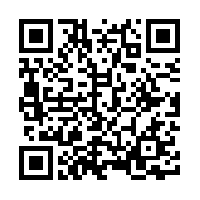Cryptography 101
What cryptography can do and what it can't!
Dennis "@the_metalgamer" Fink
18 March 2015
at "cryptoParty: Let's hack towards a better future!" by C3L
Cryptography
- Broad scientific subject
- Not only encryption
- Secure communication in the presence of third parties
- Combines other scientific disciplines (maths, computer engineering etc...)
- Multiple subcategories
- Encryption is one part of it

- On the one side: Message/Data and Key
- Key: Think of it as a password
- Magic: The function that crunches the two inputs together
- Produces data
Note: There is no 100% security!
- Everything can be compromised
If you go to Google over an encrypted channel, they still can figure out what you do and who you are
- Encryption is not equal to anonymity (but you can learn it here how to be anonymous)
- You often need both
Only as strong as the weakest link in the chain!
- Example: If you send an encrypted email to your friend and then he prints it out unencrypted, the whole encryption in useless, although people who eavesdropped could not read the message
It is always a trade-off between strength and usability/speed!
There is one encryption algorithm which is 100% secure. It's called a one-time pad. The key should be totally random and really used only once, but for this you had to always generate a new key for transfering a new message and you had to somehow exchange the key with your communication partner.
Types of encryption
- Symmetric Encryption
- The message/data is encrypted AND decrypted with the same key
- Every participant needs to have the same key
- Earliest known example: 1500 BC in Mesopotamia
- Asymmetric Encryption
- The message/data is encrypted with one key and decrypted with another key
- Every participant has it's own pair of keys
- Introduced in 1976 by a publication from Whitfield Diffie and Martin Hellman
- Symmetric Encryption
- Problem of how to securely exchange the key
- Usually faster than asymmetric encryption
- Asymmetric Encryption
- One key is called the public key which everyone in the world can have
- The other one is called the secret key which only you should have
- Usually slower than symmetric encryption
- Often we use a combination of both
Encryption paradigms
- Link encryption
- Messages/Data are encrypted between the single points of interaction
- TLS for example (HTTPS)
- End-to-end encryption
- Messages/Data are encrypted so that only the intended recipient can decrypt it
- GPG for example
- Link encryption
- Example: Imagine you would like to send a post-card to your mother and you wanted to do it encrypted. With link encryption you would encrypt the message and the address of the reciever with the key provided by the postal service. Then you would put in the letter box. If someone would break the box open could not read your message, but the postal service would need to decrypt it to read the address and then they could also read the message.
- End-to-end encryption
- Same example as with link encrytion. But instead of encrypting the message with the key of the postal service, you would encrypt the message with the key you shared with your mother. The address cannot not be encrypted, because the postal service needs access to it. An third party could not read the message, but could read the address
- You need both
- First we encrypt the message using end-to-end encryption and then encrypt the complete post-card with Link encryption
Want to know more?
Take the course at KhanAcademy:
